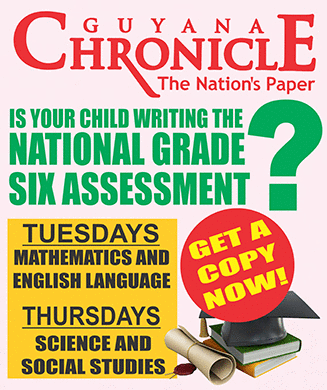FOR the past couple of days there have been at least one reported case of a fatal accident on our roadways– something which of course would be of great concern to our police and every Guyanese citizen.
Where lives are affected, destruction to vehicles and roadways, this nation can ill afford to let this pattern of conduct, which is now becoming a way of life, continues. Accidents don’t happen, they are caused. There are reasons that are contributing to the upsurge which the police should be able to identify in order to target the sources, develop requisite strategy, and allocate needed resources. At the end of June this year police reported there was a 4.3% decrease in fatal accidents. Serious, minor and damage accidents had also been decreased by 17.1%, 32.4% and 18.4% respectively. The total number of deaths stood at 47. Since June to now there have been several other fatalities.
Police in their report had broken down the causes of fatal accidents from January-June, with speeding accounting for 25 of the 47 deaths. The combination of speeding and driving under the influence of alcohol accounted for six deaths; pedestrians crossing in the path of approaching vehicle–5; inattentiveness– seven; and failure to confirm to road signs– one.
Without this newspaper having the benefit of scientific data to determine the propensity of particular road behaviours, what cannot be denied is the need to look at road usage through holistic lens. Starting from the process of training and licensing of drivers, it may be important to revisit these with a view of strengthening understanding of signs, road usage, and greater awareness of the responsibility of every driver. A motor vehicle is a weapon in the hands of the wrong driver.
Discourtesy is a prevalent feature. Some motorists accelerate when the light is amber; don’t want to wait for the light to turn green; are intolerant to observers of traffic laws and would incessantly blow their horns for them to get out of their way. There are drivers who refuse to stop at pedestrian crossing or convey the impression they won’t, even though persons are standing at the crosswalk or walking across. In some areas the speed limit offers incentive to be reckless, particularly in two-lane roads and populated zones such as schools and residential districts where homes are in close proximity to the road.
Bad road practices and discourtesies are also evident among pedestrians. Some are known to cross the streets with little or no regard for their safety or courtesy to drivers, and at times would even dare motorists to hit them. These road users are also guilty of practices such as jaywalking, wearing earplugs or on their cell-phones while ignoring proper road use and etiquette.
Then there are the connected and those who drive officials– government and diplomatic– that feel the rules of the roads and responsibility of drivers are not applicable to them. These persons can be seen driving above the speed limit, parking inappropriately, and ignoring other rules of the road. Where drinking is considered social, the legally required blood alcohol content to drive must be rigidly enforced, given the intertwined relationship with alcohol and accidents.
It is important to ensure traffic lights are always working and when they are not, such be considered deserving of priority attention. In the meanwhile, traffic officers should be placed at the affected areas to ensure orderly movement of road users, pedestrians and vehicles. The police may find it useful to have more road signs and install more cameras at areas, particularly where speeding occurs.
The traffic department could revisit penalties. Fines can be increased where they become meaningful deterrent that could ensure compliance with the rules of the road. Suspension of licence, having repeat offenders return to the classroom and engage in community service are worthy of consideration. Increasing insurance after each accident as a deterrent could be explored.
An ignored, though important consequence of bad road usage is that of economic loss such as earnings to families, be it through destruction of vehicle, injury or death that people do not usually cater for and understandably so. Frankly, this society has developed a culture to road usage that is rude, reckless and unbecoming. All and any effort to curb this destructive behaviour need to be examined and where practicable, implemented. The police are encouraged to engage stakeholders such as local government authorities, the minibus and hire care associations, and the National Road Safety Council to solicit their opinions and support in crafting a wider strategy to address road usage.




.jpg)








